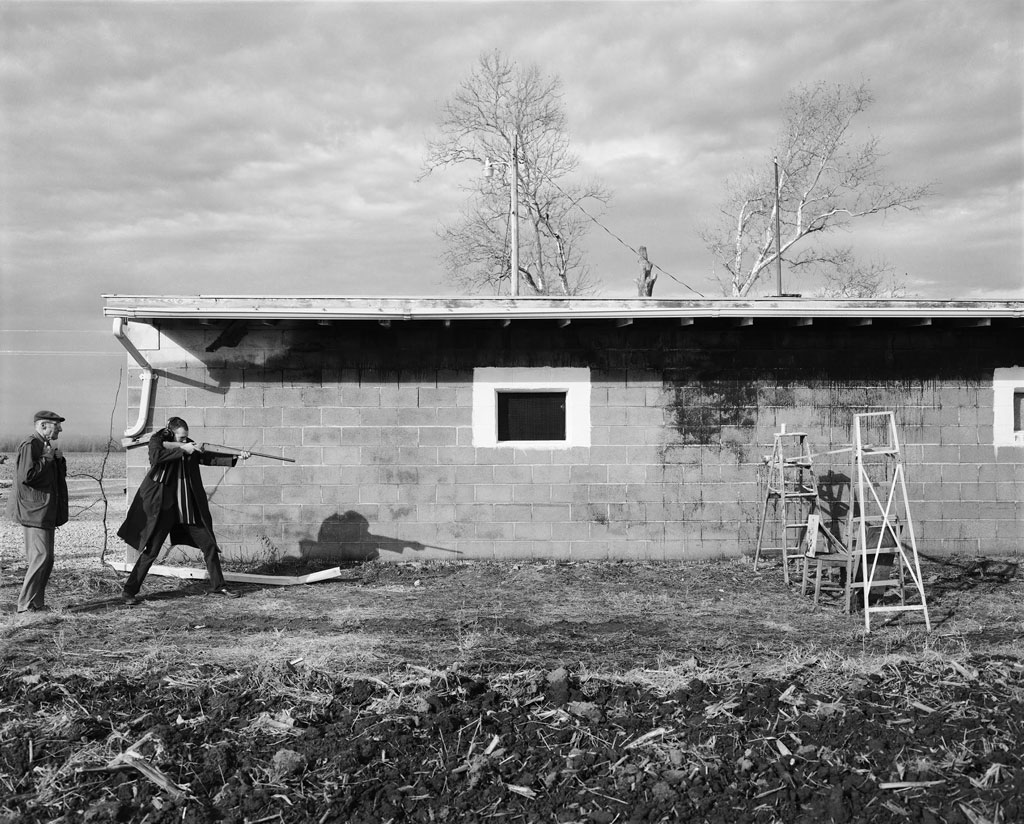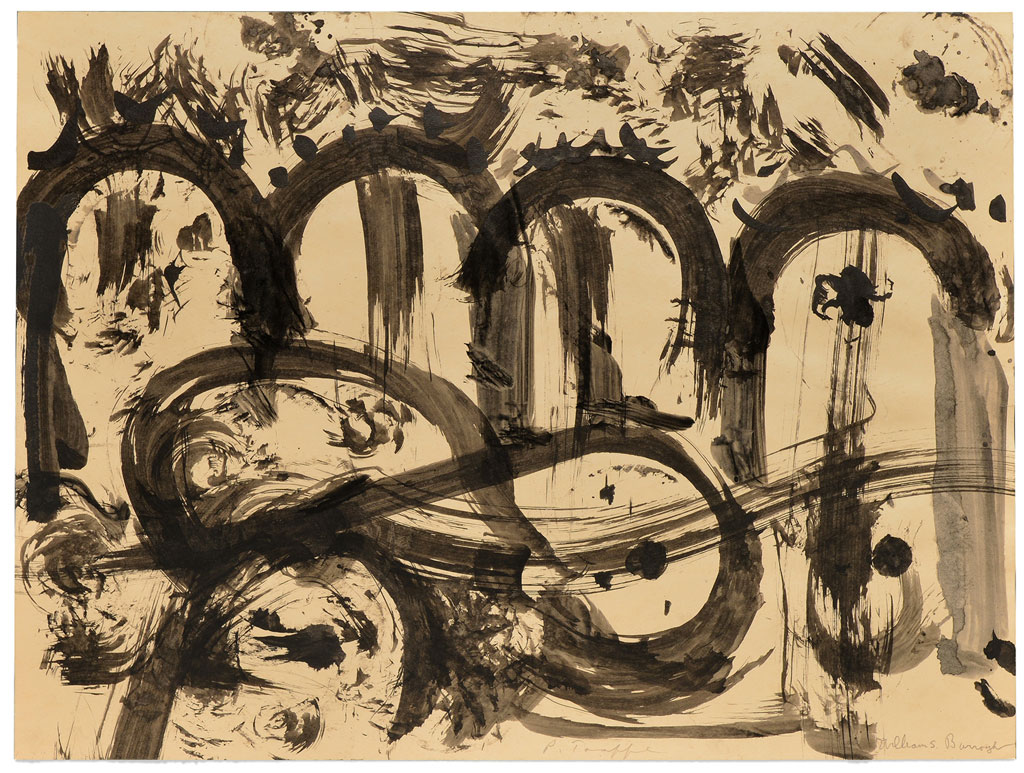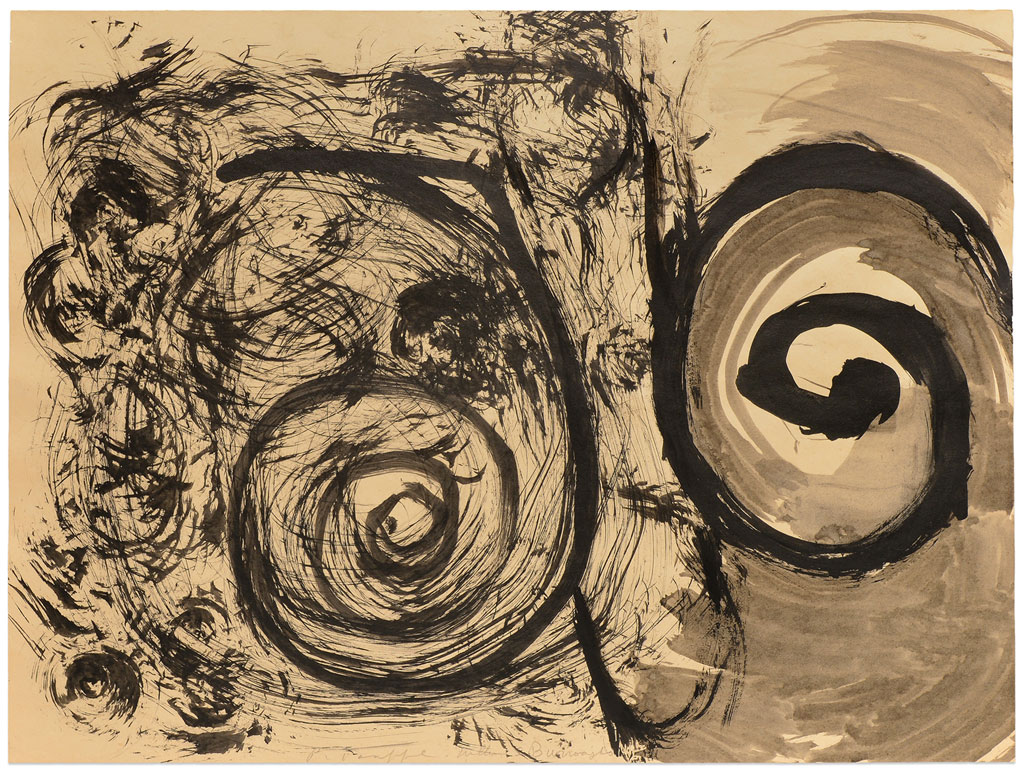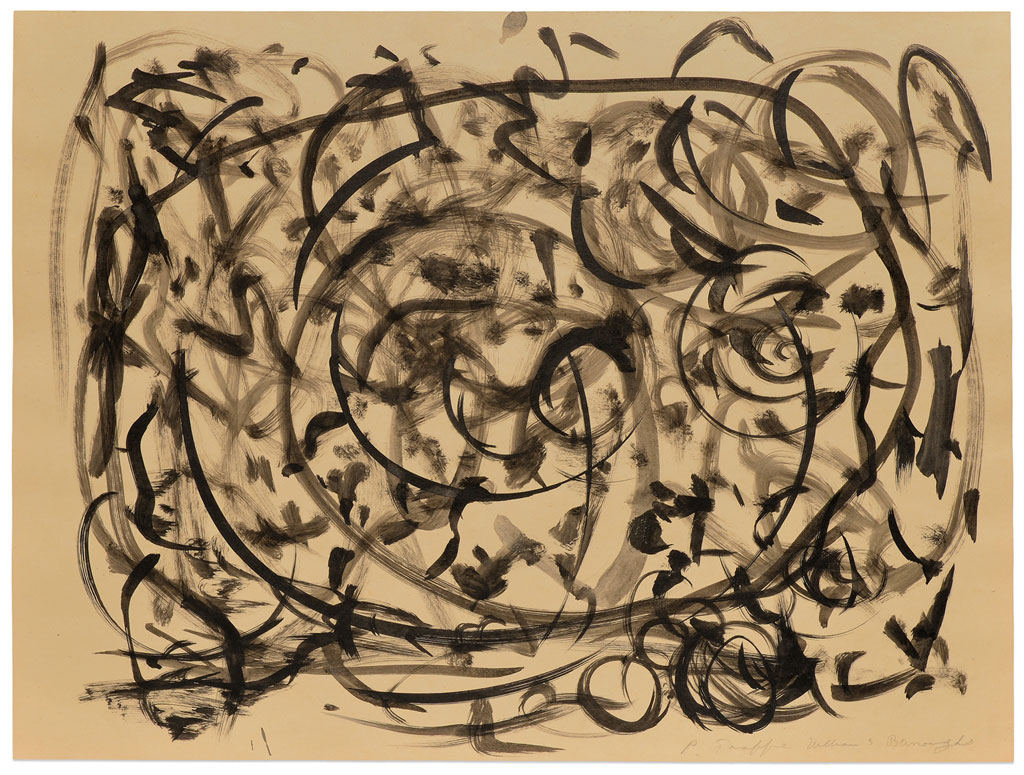ART-PRESENTATION: Philip Taaffe & William S. Burroughs
 When Philip Taaffe visited William S. Burroughs in February 1987, the latter was 73 years old, yet had lost none of his taste for elegant clothing nor his passion for drugs, whereas Taaffe was a promising young painter in the prime of life at 31, suffused by the light of his more recent glory.
When Philip Taaffe visited William S. Burroughs in February 1987, the latter was 73 years old, yet had lost none of his taste for elegant clothing nor his passion for drugs, whereas Taaffe was a promising young painter in the prime of life at 31, suffused by the light of his more recent glory.
By Efi Michalarou
Photo: Semiose Gallery Archive
An exhibition with collaborative works by Philip Taaffe and William S. Burroughs entitled “Drawing Dialogue” is on presentation at Semiose Gallery in Paris. During their encounter in Lawrence (Kansas), where Burroughs had been in residence since 1982, the two artists worked together on a series of collaborative drawings as well as various “shotgun paintings” involving cans of spray paint and plywood. This project reminded Burroughs of the joy he had felt five years pre-viously when first perfecting this technique. During the months preceding this encounter, Burroughs had gone through a difficult period and the loss of his friend Brion Gysin* had particularly affected him. Burroughs had long been embarrassed by the way his career had overshadowed that of Gysin but now there was no longer any danger of hurt feelings if he were to begin to exhibit his paintings. After meeting Philip Taaffe, he embarked on a prolific period of ‘art-making’. He felt he was explicitly communing with the spirit of Gysin and working in his studio he discovered a particular sense of renewal. Taaffe also found himself at a turning point in his career. As Roberta Smith wrote in the New York Times (27/3/1987): “He is making an important transition. Mr. Taaffe made a name for himself by remaking the paintings of older abstract artists such as Bridget Riley and then Barnett Newman, by way of a combination of painting and printmaking that is highly original. […] But now Mr. Taaffe seems to be moving away from such blatant borrowing, making images that, on the surface at least, seem to be more his own”. Burroughs always encouraged artistic collaboration. He was convinced that it produced a creative synthesis of the personalities present, postulating that 1+1=3. Burroughs and Taaffe shared an attraction for North Africa, an admiration of Islamic art and above all a belief in the esoteric power of the image. Their approach was somewhat different: the elder of the two with his action painting and the youngster creating a strictly controlled rhythm with his patterns. Burroughs would enter into a state of exaltation that was almost trance-like whereas Taaffe’s mind state was more meditative and introspective, concentrated around the repetition of mantras. Both however consummated their work with the same mystic fire. Burroughs’ painting is effective; it is charged with meaning and prophetic messages, which only reveal themselves to those willing to cross the threshold and enter his world. One of his credos was ‘Let the picture look at you’. Losing himself in and through painting, he was always the first to be astonished by the shapes that sprang forth from his abstracts, always attentive towards accidents of simultaneity. Taaffe, on the other hand, illustrates semantic stratification using pictorial means: his practice involves the meticulous composition of shapes replete with meaning, repeated over and again, superposed, embedded within each other in the manner of an encrypted code. These collaborative drawings operate at the intersection of the methodologies of the two artists: they are more composed and rhythmic than Burroughs’ usual drawings and more expressionist than those by Taaffe, they are truly the work of the ‘Third Mind’. The conversation recorded during the duo’s painting séances reveals something of the artistic process put together during their collaboration. It occupies an area close to the pragmatic or ‘performative’ dimension of language theorized by John L. Austin in his publication “How To Do Things With Words” (1962). Burroughs and Taaffe set up a projection surface (the drawing paper) that allowed them to exchange their impressions, their desires and their visions. What they said, had an effect on what they were drawing, their words lent body to their ideas, permitting them to identify shapes within the magma of ink and to bring to the surface a Madagascar Landscape or a Venusian Brothel. In this way, these exchanges constitute ‘performances’ rather than simple statements.
* Brion Gysin was a painter, writer, sound poet, and performance artist born in Taplow, Buckinghamshire. He is best known for his discovery of the cut-up technique, used by his friend, William S. Burroughs. With the engineer Ian Sommerville he invented the Dreamachine, a flicker device designed as an art object to be viewed with the eyes closed.
Info: Semiose Gallery, 54 rue Chapon, Paris, Duration: 13/4-11/5/19, Days & Hours: Tue-Sat 11:00-19:00, www.semiose.fr



